|
|
Foggieloan Virtual Museum |
|
|
Foggieloan Virtual Museum |
![]()
|
RELIGION Over the centuries since Christianity came to Scotland there have been regular breakaways from whichever was the established Church of the time, as well as sometimes violent antagonism between members of different Churches and between State and certain Churches. |
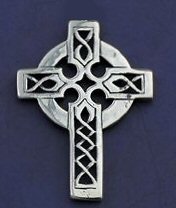 |
One of the joys of living in the Northeast of Scotland today is the absence of sectarianism and bigotry. Although people may belong to a particular Church – or none – they all get on together. Even at times of strife such as the 1840s, and throughout the rest of the 19th Century when, apart from the established Marnoch Church, there were in Aberchirder a Free Church, a United Presbyterian Church, an Episcopal Church, a Baptist Church, a Roman Catholic Church and a Church of Christ, there does not seem to have been much animosity between the members of the various congregations.
.
Churches at Marnoch
The Parish of Marnoch is named after St Marnan, a Celtic missionary from Ireland who settled on the banks of the River Deveron near what is now Bridge of Marnoch.
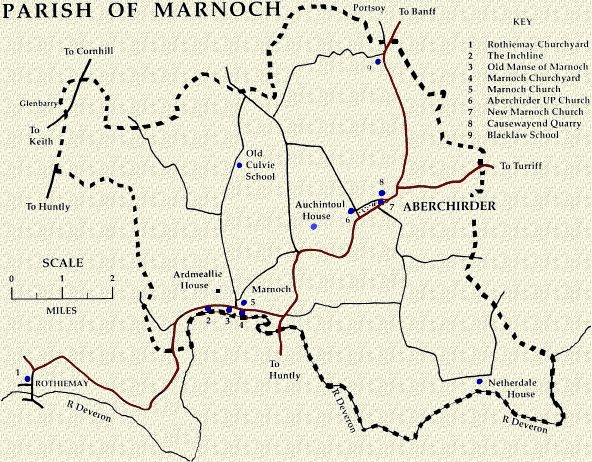
Since the time of St Marnan there was always a church
in the churchyard beside the river and over the centuries it served in
turn, Roman Catholics, Episcopalians and Presbyterians. By the 1790s the
church had become totally ruinous and in 1792 the Presbytery decided to
build a new church close by on Cairnhill to escape from the smells of
the kirkyard! However, the gable end of the old church can still be seen
in the kirkyard.
The Rev David
Henry, writing his account of the Parish of Marnoch in June 1842 for the
NSA (see box below) states
that in 1831, local people raised funds to build a vault in the former
church in which the bodies of the dead were laid for two months before
being buried, after a grave was robbed, causing a great sensation in the
parish.
|
|
|
|
The Statistical Accounts of Scotland
These were written by parish ministers and are a very
useful source of information about life at that time. The
Old Statistical Account (OSA) was published between
1791 and 1799, and the New Statistical Account (NSA)
in 1845. The chapters for Marnoch and the rest of Scotland are available
online at
http://edina.ac.uk/stat-acc-scot |
Marnoch and the Disruption
In 1841 Marnoch hit the national headlines as the result of a bitter dispute over who should have the final say in selecting the minister for a Church of Scotland parish.
By the 1830s Church of Scotland members were split into Moderates, who accepted the right (under the 1712 Patronage Act passed by Parliament) of landowners to nominate ministers, and Evangelicals, who believed the congregation should have the final say. The Evangelicals persuaded the General Assembly in 1834 to pass a Veto Act allowing a congregation to veto a minister they did not want – so church law contradicted secular law.
In Marnoch, the death of Rev William Stronach in 1837 meant that a new minister was required. The patrons (the trustees of the Earl of Fife) selected John Edwards, but the congregation preferred David Henry who had been Mr Stronach’s assistant in his last years.

David Henry
After a long legal battle, members of Strathbogie
Presbytery appeared at Old Marnoch on 21 January 1841 to induct Mr
Edwards.
The dispute had attracted national
attention, and a large
crowd gathered at the Manse of Marnoch despite having to overcome deep
snowdrifts which prevented all but one
Aberdeen stagecoach reaching Turriff, from where a carriage with four
horse had taken several hours to travel the eight miles to Aberchirder.
Early in the proceedings all but one parishioner walked out.
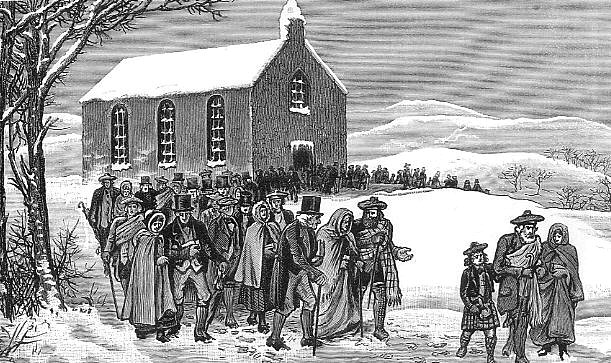
The Walk Out
The Aberdeen Banner, an
Evangelical newspaper, described the scene thus:
Old men with heads as
white as the snow that lay deep on their native hills, the middle aged,
and the young…went out into the wilderness…many in tears and all in grief.
Thereafter a crowd of protestors who had come from all around began a riot in the church.
The Banner reporter noted that,
as he re-entered the church:
Several people were
employed in throwing snow, pieces of bread and copper coins at the members
of the Presbytery.
The riot was eventually quelled by Mr Stronach of neighbouring Ardmeallie House and Mr Edwards was inducted.
An eye-witness account the
intrusion was noted in a letter from John Paterson to his brother Walter
who had emigrated to Australia in 1838.
This has been
submitted by Lorraine Threadgold,
South Australia and transcribed from the
original letter posted at Aberchirder by John Paterson
to his brother, Walter, in Mt. Barker South Australia
in 1841.
The original
is still in the possession of his Great Grandson C. J. P. Hedges.
I shall give some account of the Marnoch proceedings
concerning John Edwards the majority of the presbytery carried him [as]
one against the will of the parish they all dissented from him but one and
took him on his trials and was going to place him but the whole seven has
been suspended one year and one half but they have got on with the placing
of him by the court of Session in January and it was a day that I never
saw the like of about eleven o’clock they commenced at the manse of
Marnoch and from that to the church and the parishioners was ordered to
come to the low church and the strangers to the loft and it was filled to
excess and one of the beams sprang about one foot and the crowd dismissed
and it sprang back but there was no ill done and the seven suspended
ministers commenced to place
him but the parishioners protested against their
proceedings and left the church and beat them at their breasts and
Thompson of Keith proceeded to the pulpit but was held back by the mob and
there was a very roch
church for about three hours and they were roaring
in the loft and hissing
down on the minister snowballs were thrown from all
directions upon Edwards
and rest of his brethren but the police and the
magistrates got peace made in a hurry and they got on with placing of him
and he has been preacher ‘till now but he is up to the general assembly
and we suppose now will preach no more but we shall wait until next week
and give full account with newspaper Mr Henry has been preaching at the
Incheline every sabbath morning and in Fogieloan in the afternoon and
there has been great collections through all Scotland and England and
Ireland and America and all the way from the Cape of Good Hope to build a
church to them there was three hundred pounds collected in Aberdeen in one
day and four in Edinburgh and they are getting on with the building of it
but they are expecting to get there once again but if the Court of Session
interferes once again there will be an uproar that the like has not been
this 200 years before the members are
allowed to make their right good no more at
present but remain
your brother John Paterson
New Marnoch Church
Amazingly within 26 months the breakaway congregation had raised over £3000 from a Scotland-wide appeal, enough to build a new church and manse at the east end of Main Street in Aberchirder.
|
|
|
This dispute at Marnoch led directly to the national Disruption when the Evangelicals left the 1843 General Assembly of the Church of Scotland and set up the Free Church – of which New Marnoch Church became a member.
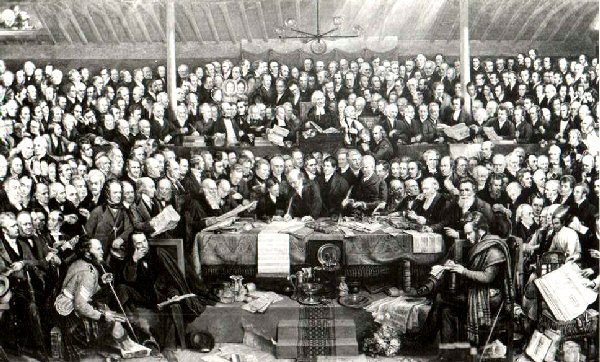
The Evangelicals signing
their demission from the Church in 1843
|
The
United Presbyterian Church While the events at Marnoch were unfolding, another Presbyterian church was built in the town in 1839 by members of the United Secession Church, which had been formed nationally in 1820 by several groups who had left the Church of Scotland in search of more evangelical preaching. The building, at the corner of Cornhill Road and North Street, became the United Presbyterian Church in 1847 and was largely rebuilt in 1893. Seven years later the UP and Free Churches combined to form the United Free Church and from 1907 used the excess building as the West Hall. |
|
| . | |
|
Church of Scotland and
Free Church In 1929 the UF Church reunited with the Church of Scotland, and from that date Marnoch had two Church of Scotland buildings – Old Marnoch at Cairnhill and New Marnoch in Aberchirder. Ironically, Old Marnoch Church, which had held evening services in Aberchirder – possibly in the Temperance Hotel – for many years had decided to build its own Church Hall for the purpose, and it opened in Main Street in 1899. Thirty years later this too became purely a hall and is still much used as a venue for community activities. In 1947 the West Hall was sold, and was used as a cinema until the end of 1950s, when it was disposed of. |
|
St Marnan’s Episcopal Church
After the Jacobite Rebellions of 1715 and 1745, when Episcopalians had tended to support the Stuarts, the Government had passed laws banning Episcopalians from gathering in any numbers for worship. These laws were repealed in 1792, and gradually new churches were constructed, including the one at the top of Main Street in Aberchirder in 1824, the first in this area.
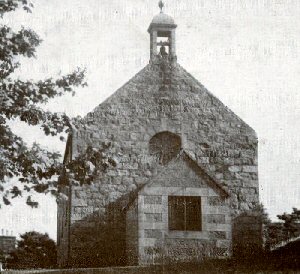
St Marnan's
Other Churches in Aberchirder
|
In the second half of the 18th Century Miss Catherine Gordon of Auchintoul House had a resident priest who held regular services there for Roman Catholics in the district. Before the end of the century she had a chapel built in Aberchirder, in what is now Rennie’s Lane, and it was in use during much of the 19th Century. |
For a time at the beginning of the 20th Century Provost William Auchinachie was a member of the Church of Christ which met in a hall above his shop in the Square, but this congregation gradually dwindled away. |
|
|
|
Churches in Marnoch Today
Today just two of all these churches are in regular use – New Marnoch and St Marnan’s. Old Marnoch can still be visited by appointment and is occasionally used for weddings.
A more detailed history of the churches in Marnoch can be gained from the 48 page book
"Aul' Kirkers, Free Kirkers and U.P.'s in Marnoch 1792 - 1992
written by our Historian Bob Peden
You can purchase this book by contacting us or through our Gift Shop on this web site.
Copyright © 2002 – ADCA Aberchirder, North East Scotland.